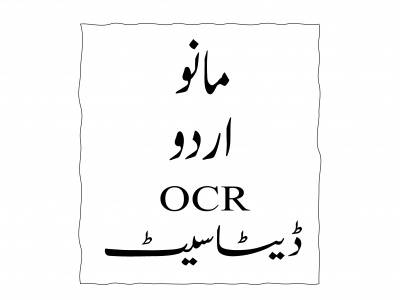Image Processing

This dataset is used to compressive sensing scenes and assist users in training the optimal sparsity threshold. The input features are image compression ratio, image size, and sparsity, while the label field is the optimal sparsity threshold. The test images are from the USC-SIPI dataset.
- Categories:
 40 Views
40 ViewsThe Colour-Rendered Bosphorus Projections (CRBP) Face Dataset represents an innovative advancement in facial recognition and computer vision technologies. This dataset uniquely combines the precision of 3D face modelling with the detailed visual cues of 2D imagery, creating a multifaceted resource for various research activities. Derived from the acclaimed Bosphorus 3D Face Database, the CRBP dataset introduces colour-rendered projections to enrich the original dataset.
- Categories:
 326 Views
326 ViewsThis work presents a new labeled dataset of videos with native and professional interpreters articulating words and expressions in Libras (Brazilian Sign Language). We used a methodology based on related studies, the support of the team of articulators, and the existing datasets in the literature.
- Categories:
 991 Views
991 ViewsWe investigated the long term functionality of the designed PMCS in a practical use case where we monitored plant growth of classical horticulture Dianthus flowers (Dianthus carthusianorum) under the effect of plastic mulching over a period of 4 months. This use case represents a common phenological monitoring case that can be used in agricultural studies. For this, we integrated our PMCS in an embedded vision camera equipped with the openMV H7 Plus board in a waterproof housing [26]. The system shown in Fig.
- Categories:
 75 Views
75 ViewsThe "MANUU: Handwritten Urdu OCR Dataset" is an extensive and meticulously curated collection to advance OCR (Optical Character Recognition) for handwritten Urdu letters, digits, and words. The compilation of the dataset has been conducted methodically, ensuring that it encompasses a wide variety of handwritten instances. This comprehensive collection enables the construction and assessment of strong models for Optical Character Recognition (OCR) systems specifically designed for the complexities of the Urdu script.
- Categories:
 730 Views
730 Views
Video super-resolution (SR) has important real world applications such as enhancing viewing experiences of legacy low-resolution videos on high resolution display devices. However, there are no visual quality assessment (VQA) models specifically designed for evaluating SR videos while such models are crucially important both for advancing video SR algorithms and for viewing quality assurance. Therefore, we establish a super-resolution video quality assessment database (VSR-QAD) for implementing super-resolution video quality assessment.
- Categories:
 216 Views
216 Views
Video super-resolution (SR) has important real world applications such as enhancing viewing experiences of legacy low-resolution videos on high resolution display devices. However, there are no visual quality assessment (VQA) models specifically designed for evaluating SR videos while such models are crucially important both for advancing video SR algorithms and for viewing quality assurance. Therefore, we establish a super-resolution video quality assessment database (VSR-QAD) for implementing super-resolution video quality assessment.
- Categories:
 34 Views
34 Views
Video super-resolution (SR) has important real world applications such as enhancing viewing experiences of legacy low-resolution videos on high resolution display devices. However, there are no visual quality assessment (VQA) models specifically designed for evaluating SR videos while such models are crucially important both for advancing video SR algorithms and for viewing quality assurance. Therefore, we establish a super-resolution video quality assessment database (VSR-QAD) for implementing super-resolution video quality assessment.
- Categories:
 48 Views
48 ViewsTo test the feasibility of the idea: Using the processed data of sentinel-2 and GlobeLand30 as the input image and ground truth of subspace clustering for land cover classification, a dataset named 'MSI_Gwadar' is created.
'MSI_Gwadar' is a multi-spectral remote sensing image of Gwadar (town and seaport, southwestern Pakistan) and its four regions of interest, which includes MATLAB data files and ground truth files of the study area and its four regions of interest.
- Categories:
 309 Views
309 Views
Video super-resolution (SR) has important real world applications such as enhancing viewing experiences of legacy low-resolution videos on high resolution display devices. However, there are no visual quality assessment (VQA) models specifically designed for evaluating SR videos while such models are crucially important both for advancing video SR algorithms and for viewing quality assurance. Therefore, we establish a super-resolution video quality assessment database (VSR-QAD) for implementing super-resolution video quality assessment.
- Categories:
 29 Views
29 Views



